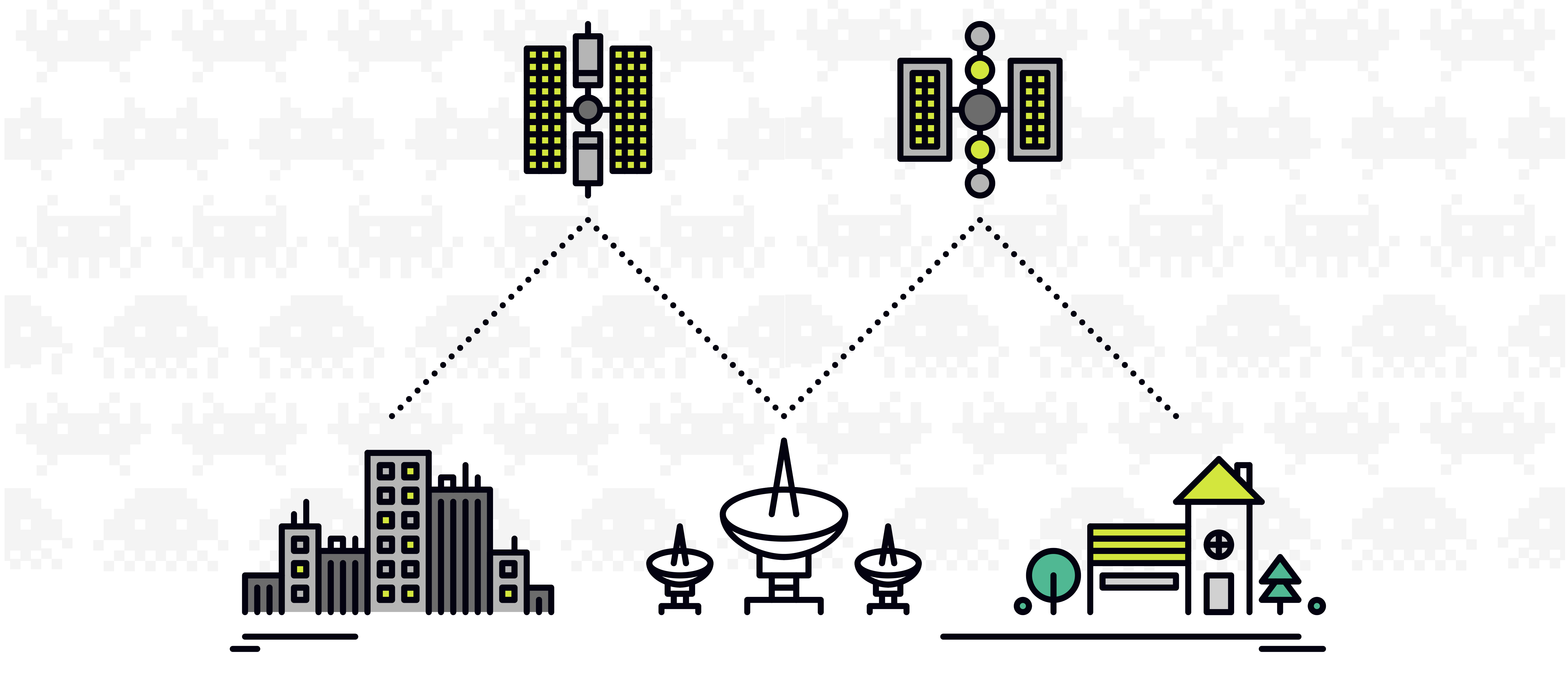Talia Announces Interconnection Service to AWS, Azure, Facebook and Google Cloud
Talia has today announced enhancements to its core network, adding interconnects to Microsoft Azure, Amazon Web Services (AWS), Facebook and Google.
 Gamers who live in rural areas of the world, where terrestrial infrastructure is minimal or non-existent, are limited in their choice of internet access. Satellite internet (VSAT) is a good option to fulfil their gaming needs. But satellite internet will not be suitable for every video game genre. Here’s what you need to know about gaming online over a satellite internet connection.
Gamers who live in rural areas of the world, where terrestrial infrastructure is minimal or non-existent, are limited in their choice of internet access. Satellite internet (VSAT) is a good option to fulfil their gaming needs. But satellite internet will not be suitable for every video game genre. Here’s what you need to know about gaming online over a satellite internet connection.
The good news with satellite internet is that you are able to gain broadband-like speeds wherever you are. So long as you fall under your satellite provider’s footprint you should be able to achieve high speeds – approximately 10-20Mb/s. This is more than enough for most video games – whether on a console, PC, tablet or mobile phone.
However, the problem with gaming via VSAT is latency. Latency is the time required for the data to travel the distance between your satellite dish to the geostationary satellite and back. This distance is 36,000 km.
Latency from a geostationary satellite is approximately 500-800ms (milliseconds) depending on where you are under the satellite’s footfall. This doesn’t sound like a lot. However, some video games require split-second decisions, such as the Call of Duty series. A half a second delay can result in game-death before you’d even known it happened.
Ping is another term used within the gaming community. This is the latency plus the reaction time to recognise and respond to another computer/server within the game. This is seen in online video games where players appear to be ‘teleporting’ around the map. Many games consider this as cheating and can kick you off the server.
Many strategy video games operate on a turn-base system. This means that latency will not be noticeable. These games can include Civilization 5, Empire Total War or Sid Meier’s Civilisation. These also include online versions of board games, such as Monopoly or Uno.
Real-time strategy games, such as Age of Empires, may not be suitable to play via VSAT. This requires a real-time reaction from a player’s move which the latency may not show you your opponent’s move quick enough to react.
Most role-playing video games do not involve split-second decision making. Each RPG will have a variety levels of action or intensity so their performance affected by latency will vary. You may notice that there may be some delays in actions from your fellow players but these are generally not enough to make games unplayable. These games include Second Life or Farmville.
Shooting genre recommends latency of 100ms or less as these games require split-second thinking and other rapid movements. The latency created by satellite internet may mean that inputs from other players may appear after actions have happened. This means you may appear as a sitting duck to your opponent as the server may have registered you dead – before you have a chance to retaliate. These video games include Call of Duty, Battlefield etc.
Like shooting, the latency usually requires split-second decision making. Video games such as FIFA 2016, will not be suitable for satellite internet.
Certain racing games will be playable over satellite internet. Games that do not require direct completion, such as Colin McRae Dirt that uses time trials instead of head-to-heads, will play well over a satellite connection. This is because maps/physics are handled by your computer and are not processed on a server. The only data sent to the server is your player data and what time you achieved.
In theory, yes! LEO satellites are considered anything between 160km to 2,000 km from the surface of the earth. This means latency will be vastly reduced and the difference between LEO and terrestrial internet will be negligible.
LEO satellites are still in their infancy. Companies, such as O3b, have created LEO satellites for internet access in (primarily) emerging markets. While the initial cost for equipment is expensive, the cost per megabyte is much lower. The latency for O3b satellites is lower than 150ms – 4-6 times faster compared to a geostationary satellite. If you’re lucky to live +45/-45 degrees of the equator, this could be a good alternative.
Do you use satellite internet for gaming? What are your experiences so far? Let us know on Facebook, Twitter or LinkedIn.